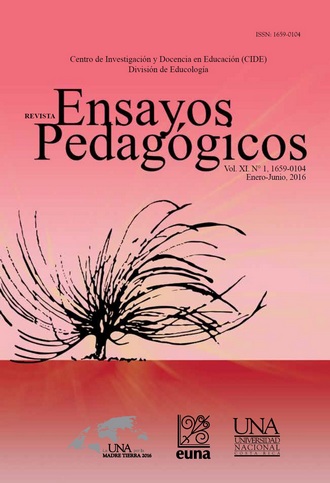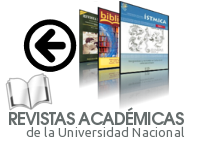Effectiveness of the Ecological Program “Saltando por su salud” in the Promotion of Physical Activity and Self-Efficacy in Third-Grade School Children
DOI:
https://doi.org/10.15359/rep.11-1.8Keywords:
physical education, moderate physical activity, children, school recreation, social support, behavioral skills, management of environmental barriersAbstract
The purpose of this paper was to evaluate the effectiveness of the “Saltando por su Salud” program on the variables of physical activity and self-efficacy in third grade School children, using an ecological model. Study Design: A quasi-experimental design was used for 4 months. Subject: 34 boys and 32 girls took part with an average age of 9.2 years. 30% of the participants were overweight or obese. Intervention: the intervention included: structuring of PE to encourage moderate physical activity, physical education activities for life and behavioral skills, along with the development of environmental conditions and social support to promote physical activity during recess. Results: Children in the intervention group had a significant increase in physical activity (p <.001) measured by pedometers. In addition, they showed an improvement in the self-efficacy to overcome barriers for physical activity (p <.001). Conclusions: The “Saltando por su Salud” program improved time spent on physical activity and strategies to overcome barriers for physical activity This study demonstrated that using existing school resources and an ecological approach, It is possible to build healthier school environments.
References
Aedo, A. y Ávila, H. (2009) Nuevo cuestionario para evaluar la autoeficacia hacia la actividad física en niños. Revista Panamericana de Salud Publica, 26(4), 324–9. Recuperado de http://dx.doi.org/10.1590/S1020-49892009001000006
Annesi, J. J. (2006). Relations of physical self-concept and self-efficacy with frequency
of self-selected physical activity in preadolescents: Implications for after-school care programming. Journal of Psychosomatic Research, 61, 515-520.
Annesi, J. J., Faigenbaum, A. D., Westcott, W. L., Smith, A. E., Unruh, J. L. & Hamilton, F. G. (2007). Effects of the Youth Fit For Life protocol on physiological, mood, self-appraisal, and voluntary physical activity changes in African American
preadolescents: Contrasting after-school care and physical education formats. International Journal of Clinical and Health Psychology, 7, 641-659.
Bailey, R. C., Olson, J., Pepper, S. L., Porszasz, J, Barstow, T. J., Cooper, D. M. (1995). The level and tempo of children's physical activities: an observational study. Med Sci Sports Exerc, 27(7):1033–1041.
Bandura, A. (1997). Self-efficacy: The exercise of control. New York: Freeman.
Biddle S. J. H., Gorely, T., Stensel, D. J. (2004). Health-enhancing physical activity and sedentary behaviour in children and adolescents. J Sports Sci. 2004;22:679–701.
Boreham C, Riddoch C. (2001). The physical activity, fitness and health of children. J Sports Sci, 19(12):915–929.
Bronfenbrenner, U. (1979). The Ecology of Human Development: Experiments by Nature and Design. Harvard University Press, Cambridge, MA.
Centro de Control y Prevención de Enfermedades [CDC]. (2015). Calculadora del índice de masa corporal para la población infantil y juvenil. Recuperado de: http://nccd.cdc.gov/dnpabmi/Calculator.aspx
Chatzisarantis, N. L. D., Hagger, M. S., (2008). Effects of an intervention based on self- determination theory on self-reported leisure-time physical activity participation.
Psychol. Health, 24, 29–48.
Colley, R. C., Janssen, I., & Tremblay, M. (2012). Daily step target to measure adherence to physical activity guidelines in children. Medicine and science in sports and exercise, 44(5), 977.
Commonwealth Scientific Industrial Research Organisation. (2008). Australian National Children's Nutrition and Physical Activity Survey. In Australian Government Department of
Health and Ageing, Department of Agriculture Fisheries and Forestry. Canberra: Australian Food and Grocery Council:1–44.
Cox, M., Schofield, G., Kolt, G. S. (2010). Responsibility for children's physical activity: parental, child, and teacher perspectives. J. Sci. Med. Sport 13, 46–52.
Dallow, B. & Anderson, J. (2003). Using self-efficacy and a transtheoretical model to develop a physical activity intervention for obese women. American Journal of Health Promotion, 17 (6), pp. 373–381.
Dishman, R. K., Motl, R. W, Saunders, R., Felton, G., Ward, D.S., Dowda, M., & Pate, R. R. (2004). Self-efficacy Partially mediates the effect of a school-based physical-activity intervention among adolescent girls. Preventive Medicine, 38, 628–636.
Dudley, D., Okely, A., Pearson, P., Cotton, W. (2011). A systematic review of the effectiveness of physical education and school sport interventions targeting physical activity, movement skills and enjoyment of physical activity. Eur. Phys. Educ. Rev, 17, 353–378.
Duncan, S. C., Duncan, T. E., & Strycker, L. A. (2005). Sources and types of social support in youth physical activity. Health Psychology, 24(1), 3e10.
Fein A. J, Plotnikoff, R. C., Wild C., Spence J. C. (2004). Perceived environment and physical activity in youth. International Journal of Behavioral Medicine, 11(3),135-142. 21.
Giannakidou, D. M., Kambas, A., Ageloussis, N., Fatouros, I., Christoforidis, C., Venetsanou, F., Douroudos, I., & Taxildaris, K. (2012). The validity of two Omron pedometers during threadmill walking in speed dependent. European of Applied Physiology, 112(1), 49.57. Doi: 10.1007/s00421-011-1951-y
Goran, M., Reynolds, K., & Lindquist, C. (1999). Role of physical activity in the prevention of obesity in children. International Journal of Obesity, 18-33.
Holbrook, E. A., Barreira, T. V., & Kang, M. (2009). Validity and reliability of Omron pedometers prescribed and self-paced walking. American College of Sports Medicine, 41(3) 669-673.
Janssen, I., and LeBlanc, A. G. (2010). Systematic review of the health benefits of physical activity and fitness in school-aged children and youth. International Journal of Behavioral Nutrition and Physical Activity, 7. doi:10.1186/1479-5868-7-40.
Janz K. F., Burns T. L., Levy, S. M. (2005). Tracking of Activity and Sedentary Behaviors in Childhood: The Iowa Bone Development Study. Am J Prev Med, 29(3), 171–178.
Kahn, E. B., Ramsey, L. T., Brownson, R. C., Heath, G. W., Howze, E. H., Powell, K. E., Stone, E. J., Rajab, M. W., Corso, P. (2002). The effectiveness of interventions to increase physical activity: a systematic review. Am J Prev Med, 22, 73–107.
Kriemler, S., Meyer, U., Martin, E., van Sluijs, E., Andersen, L., Martin, B. (2011). Effect of school-based interventions on physical activity and fitness in children and adolescents: a review of reviews and systematic update. Br. J. Sports Me, 45, 923–930. 8.
Kumanyika, S. K. (2001). Mini simposio sobre la obesidad: visión general y algunas consideraciones estratégicas. Annu Rev Salud Pública, 22, 293-308.
Lee, M., Lee, D., Park, C., Park, G., Lee, D., Kim, S., & Kim, Y. (2012). Validity evidence of Omron pedometer HJ-720ITC for Korean children: A preliminary study. Journal of Science and Medicine in Sport, 15(supp 1), S297.
Lox, C., Martín, K. & Petruzzello, S. (2006). The Psychology of Exercise. Arizona: HHP.
Lubans, D. R., Foster, C., Biddle, S. J. H. (2008). A reviewofmediators of behavior in interventions to promote physical activity among children and adolescents. Prev. Med, 47, 463–470. 20.
McAuley, E., Blissmer, B. J., Katula, J. & Duncan, E. (2000). Exercise environment, self-efficacy, and affective responses to acute exercise in older adults. Psychology and Health, 15 (3), 341–355.
McAuley, E., Blissmer, B., Katula, J., Duncan, E. & Mihalko, L. (2000). Physical activity, self-esteem, and self-efficacyrelationships in older adults: a randomized controlled trial. Annals of Behavioral Medicine, 22, 131–139.
McKenzie T. L., Crespo, N. C., Baquero, B., & Elder, J. P. (2010). Leisure-time physical activity in elementary schools: analysis of contextual conditions. J Sch Health, 80, 470–477.
McKenzie, T. L., Nader, P. R., Strikmiller, P. K., Yang, M. (1996). School physical education: Effect of the child and adolescent trial for cardiovascular health. Prev.Med, 25, 423–431.
Michie, S., Abraham, C. (2004). Interventions to change health behaviours: evidencebased or evidence-inspired? Psychol. Health, 19, 29–49.
Organización Mundial de la Salud. (2012). Obesidad y sobrepeso. Nota descriptiva N.311 Recuperado de: http://www.who.int/mediacentre/factsheets/fs311/es/
Pangrazi, R. (2007). Physical Activity Interventions in Children and Adolescents. Pediatr Exerc Sci, 19(4):493–494.
Peters, B. P., Heelan, K. A., & Abbey, B. M. (2013). Validation of Omron TM Pedometers using MTI accelerometers for use with children. International Journal of Exercise Science, 2, 106-113.
Salmon, J., Timperio, A. (2007). Prevalence, trends and environmental influences on child and youth physical activity. Med Sport Sci, 50, 183---199. 15.
Salmon, J., Booth, M. L., Phongsavan, P., Murphy, N., Timperio, A. (2007). Promoting Physical Activity Participation among Children and Adolescents. Epidemiol Rev, 29, 144– 159. 23.
Sallis, J. F. & Glanz, K. (2006). “The role of built environments in physical activity, eating, and obesity in childhood,” The Future of Children, 16(1), 89–108.
Sallis, J. F., Conway, T. L., Prochaska, J. J., McKenzie, T. L., Marshall, S. J., Brown, M. (2001). The association of school environments with youth physical activity. Am J Public Health, 91, 618–62018.
Sallis, J., McKenzie, T. L., Alcaraz, J., Kolody, B., Faucette, N., Hovell, M. (1997). The effects of a 2-year physical education program (SPARK) on physical activity and fitness in in elementary school students. Sports, Play and Active Recreation for Kids. Am J Public Health, 87(8), 1328-34.
Sallis, J. F., Prochaska, J. J., & Taylor, W. C. (2000). A review of correlates of physical activity of children and adolescents. Medicine and Science in Sports and Exercise, 32(5), 963e975. 37.
Stone, E., McKenzie, T., Welk, G., Booth, M. (1998). Effects of physical activity interventions in youth: Review and synthesis. Prev Med, 15, 298–315.
Strong, W. B., Malina, R. M., Blimkie, C. J. R., Daniels, S. R., Dishman, R. K., Gutin, B., Hergenroeder, A. C.,… & Trudeau, F. (2005). Evidence based physical activity for school-age youth. J Pediatr, 146(6), 732–737. 5.
Taylor, I. M., Lonsdale, C. (2010). Cultural differences in the relationships among autonomy support, psychological need satisfaction, subjective vitality, and effort in British and Chinese physical education. J. Sport Exerc. Psychol, 32, 655–673.
Timperio, A., Salmon, J., Ball, K. (2004). Evidence-based strategies to promote physical activity among children, adolescents and young adults: review and update. Journal of Science and Medicine in Sport, 7(Suppl 1), 20–29.
Tudor-Locke, C., Bassett, D. R. Jr. (2004). How many steps/day are enough? Preliminary pedometer indices for public health. Sports Medicine, 34(1), 1-8
Tudor-Locke, C., MaClain, J. J., Hart, T. L., Sisson, S. B., & Washington, T. L. (2009). Pedometry methods for assessing free-living youth. Research Quarterly for Exercise and Sport, 80(2), 175-184.
Ward, D., Saunders, R., & Pate, R. (2007). Physical Activity Interventions in Children and Adolescents. USA: Human Kinetics Publishers.
Wareham, N. J., Van Sluijs, E. M. F., Ekelund, U. (2005). Physical activity and obesity prevention: A review of the current evidence. Proc Nutr Soc, 64:229–247
Willenberg, L. J., Ashbolt, R., Holland, D., Gibbs, L., MacDougall, C., Garrard, J., Green, J.,B., Waters, E. (2010). Increasing school playground physical activity: A mixed methods study combining environmental measures and children’s perspectives. J Sci Med Sport, 13, 210–216.
Wing, R. R., Goldstein, M. G., Acton, K. J., Birch, LL., Jakicic, J. M., Sallis, J. F. Jr, Smith-West, D., Jeffery, R. W., Surwit, R. S. (2001). Behavioral science research in diabetes: lifestyle changes related to obesity,eating behavior, and physical activity. Diabetes Care, 24(1), 117–123. 4.
World Health Organization. The World Health Report (2002). Reducing Risks, Promoting Healthy Life. Geneva, Switzerland: WHO.
Yetter, G. (2009). Exercise-based school obesity prevention programs: an overview. Psychology in the Schools, 46, 739e747
Downloads
Published
How to Cite
Issue
Section
License
Ensayos Pedagógicos is subscribed to the Attribution-NonCommertial-NoDerivatives 4.0 International Creative Commons Licence, which allows both authors and readers to freely download, store, copy, and distribute the final approved publisehd version of the manuscript (post-print) as long as this is done without commercial purposes, no derivative works are generated, and the source and author are mentioned. As well, Ensayos Pedagógicos declares that authors will remain the rightful owners of the copyrights of their work in perpetuity.







